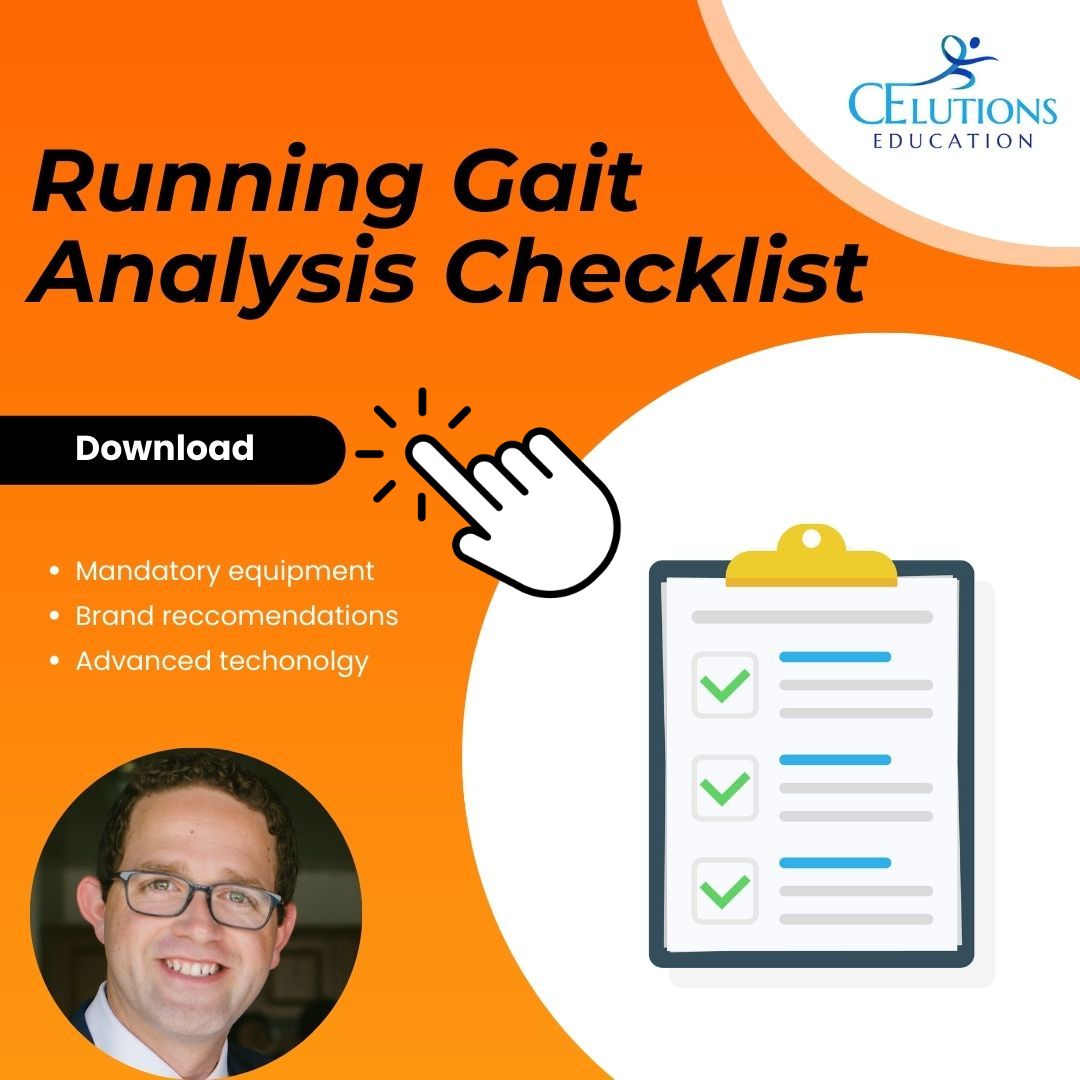The Secret To A Quick And Dirty Gait Analysis
Mar 23, 2023
Have you ever wanted something you don’t have? Well sometimes that’s the case when you want to do a gait analysis. Maybe you’re a burgeoning clinic that doesn’t have a treadmill yet or perhaps you’re a home health PT without the luxury of equipment at your disposal or maybe you are a telemedicine PT without an office. Whatever your situation, sometimes we find ourselves without the resources we might want to provide a gait analysis. So what’s our solution for our patients? Don’t provide them a gait analysis? No, there are still a lot of ways you can help and it starts with a quick and dirty gait analysis that you can perform almost anywhere.
Gait Analysis Set Up
First, we need to get some assumptions out of the way before we start our gait analysis. These assumptions include the following: your patient can walk and/or run, there is enough space (either inside or outside) for the patient to walk or run unobstructed for at least 50 feet and the PT has access to a smartphone. With those assumptions in mind all you need for a quick and dirty gait analysis is a smartphone and colorful stickers. To set up your gait analysis first, place your stickers on the patient’s lateral malleolus, fibular head, greater trochanter, posterior calcaneus and PSIS. Once the anatomical locations are marked, have the patient warm up by walking slowly and transitioning to a full walk or run after 3 - 5 minutes. At the end of their warm up the patient should be able to walk or run at their normal pace comfortably. Once the patient is ready for their gait analysis it’s time to set up your video locations. Pick two locations that will provide a posterior view and lateral view. It’s important to note that these locations will need to maintain the patient in the frame during the whole distance that they travel, so give extra consideration to how close or far away you need to be to your patient to view them from the lateral view. If you can not keep the patient in the frame for the entire distance make sure to pick a location anywhere from ½ - ¾ of the way through the distance they are traveling. Additionally, it is advised to either squat or kneel in an attempt to keep the camera as still as possible during recording. Gather 2 sets of videos from each direction in slow motion. Now it’s time to analyze the runner’s gait.
Gait Analysis And How To Comprehend The Intangibles
Once you have the gait analysis data view the videos in slow motion. It is important to note that not all data collected may be applicable for analysis. The video recording you will want to analyze is when the patient is traveling at their comfortable, “typical” speed without any environmental abnormalities such as bumps on the ground or turns in the road. Usually this occurs during the middle of their walking or running distance. Make sure to use your stickers to identify the anatomical landmarks and look critically at the following by using the zoom feature on your smartphone:
Lateral view:
- Foot strike at initial contact (forefoot, midfoot, rearfoot)
- Knee joint angle at initial contact, midstance and swing (excessive flexion vs hyperextended)
- Femoral position at initial contact (is the patient overstriding?)
- Femoral position at terminal hip extension (limited, excessive?)
- Pelvic tilt (anterior/posterior)
- Trunk lean (anterior/posterior)
Posterior view: - Foot strike width (are the feet crossing over each other?)
- Foot progression angle and (excessive pronation or supination)
- Genu valgum or genu varus during stance
- Hip drop
- Trunk lateral lean or rotation
Once you have identified those anatomical landmarks and the relevant gait deviations from one “lap” of the patient's gait analysis repeat the same process for 2 more “laps” to best mitigate any irregularities in their gait patterns since you are analyzing a short distance.
So What’s The Secret to a Quick And Dirty Gait Analysis?
Now that you’ve identified some of the relevant running gait deviations it is time to construct a plan of care to address the running gait deviations. But the secret to a quick and dirty gait analysis is to identify the limitations to your analysis. One of the best ways to do this is to only address the gait deviations that are obvious. For example, if a runner has genu valgum bilaterally and they report symptoms of runner’s knee, you are probably safe to start addressing the genu valgum. Click here if you want more information on a runner that resolved their runner’s knee with one running gait analysis. Lastly, use other objective tests and measurements to validate your running gait analysis to help insure your patients will have positive results from your interventions. This can include manual muscle testing, ROM measurements, special tests and functional movement assessments.
How To Elevate Your Gait Analysis
Hopefully this helps for you to be able to conduct quick and dirty gait analyses. If you are interested in learning more about providing an advanced running gait analysis and starting your own running gait analysis clinic check out our continuing education course “The Essentials of Running Gait Analysis”. The majority of attendees recover their investment of purchasing the course within the first two running gait analyses they conduct. Lastly, if you have questions about this content or the course feel free to reach out to us to discuss and we will personally respond to your questions.
Listen to the podcast!
If you haven’t done so already grab the “24 Hour Gait Analysis Checklist” and start your own running gait analysis clinic.

